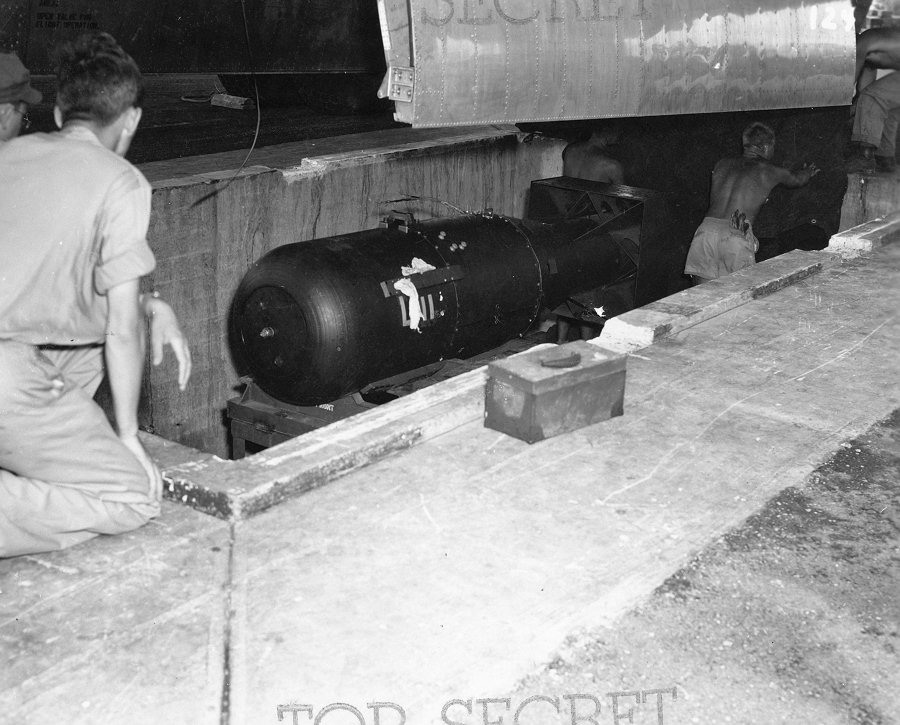An explosive nuclear chain reaction occurs when a sufficient quantity of nuclear fuel, such as uranium or plutonium, is brought together to form a critical mass. This is the minimum amount of fissionable material needed to start a chain reaction. The chain reaction starts when neutrons strike the heavy uranium or plutonium nucleus which splits releasing a tremendous amount of energy along with two or more neutrons which, in turn split more nuclei, and so on. For more information, see The Science Behind the Atom Bomb.
Little Boy
In this gun-type device, the critical mass is achieved when a uranium projectile which is sub-critical is fired through a gun barrel at a uranium target which is also sub-critical. The resulting uranium mass comprised of both projectile and target becomes critical and the chain reaction begins. Dropped on the Japanese city of Hiroshima on August 6, 1945, it was the first nuclear weapon used in a war.
- Weight: 9,700 lbs
- Length: 10 ft.; Diameter: 28 in.
- Fuel: Highly enriched uranium; “Oralloy”
- Uranium Fuel: approx. 140 lbs; target – 85 lbs and projectile – 55 lbs
- Target case, barrel, uranium projectile, and other main parts ferried to Tinian Island via USS Indianapolis
- Uranium target component ferried to Tinian via C-54 aircraft of the 509th Composite Group
- Efficiency of weapon: poor
- Approx. 1.38% of the uranium fuel actually fissioned
- Explosive force: 15,000 tons of TNT equivalent
- Use: Dropped on Japanese city of Hiroshima; August 6, 1945
- Delivery: B-29 Enola Gay piloted by Col. Paul Tibbets
Fat Man
“Fat Man” was the second plutonium, implosion-type bomb. The first was the “Gadget” detonated at the Trinity site on July 16, 1945. In the implosion-type device, a core of sub-critical plutonium is surrounded by several thousand pounds of high-explosive designed in such a way that the explosive force of the HE is directed inwards thereby crushing the plutonium core into a super-critical state. Dropped on the Japanese city of Nagasaki on August 9, 1945, it was the second nuclear weapon used in a war.
 Weight: 10,800 lbs
Weight: 10,800 lbs- Length: 10 ft 8 in.; Diameter: 60 in.
- Fuel: Plutonium 239
- Plutonium Fuel: approx. 13.6 lbs; approx. size of a softball
- Plutonium core surrounded by 5,300 lbs of high explosives; plutonium core reduced to size of tennis ball
- Bomb Initiator: Beryllium – Polonium
- All components of Fat Man ferried to Tinian Island aboard B-29’s of the 509th Composite Group
- Efficiency of weapon: 10 times that of Little Boy
- Approximately 1 kilogram of plutonium fissioned
- Explosive force: 21,000 tons of TNT equivalent
- Use: Dropped on Japanese city of Nagasaki; August 9, 1945
- Nuclear Weaponeer: Cdr. Frederick Ashworth
- Delivery: B-29 Bockscar piloted by Maj. Charles Sweeney
Photos courtesy the National Archives.





